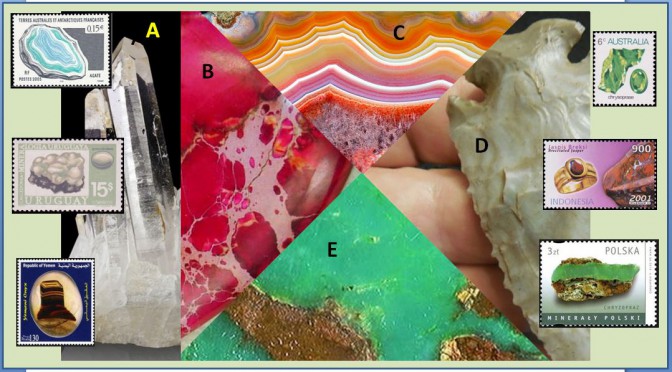Published in the February issue of WCGMC News
Quartz is simple. Right? Just a silicon (Si) atom nestled in the center of a tetrahedral form surrounded by four oxygen atoms. Build them together, let the silica-centered tetrahedral motifs share oxygen atoms and bingo we have SiO2. Quartz crystals grow from this. They grow into beautiful clear, milky or smoky trigonal crystals with six-sided prisms terminating in six-sided pyramids, simple as a childhood erector set or a Lincoln Log cabin (with that distinctive green roof). Herkimer diamonds are our favorites, but amethyst and citrine colors are nice too.
OK, but now we are told that quartz which grows rapidly or under “special” conditions can be cryptocrystalline, a condition that exists when the individual quartz crystals are too small to see even with an optical microscope. And this apparently changes everything. No longer are we collectors satisfied to apply the common mineral name, albeit with a few modifiers for color (amethyst, citrine, rose quartz).
